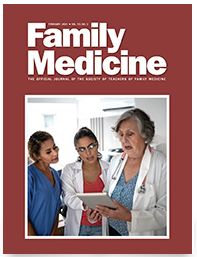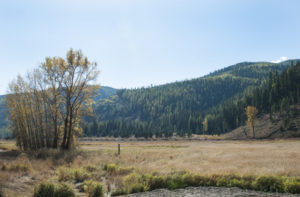PUBLICATIONS
Office of Rural Programs publishes peer-reviewed articles that contribute to scholarly works on the impact of rural medicine.
2023
The Effect of Rural Underserved Opportunities Program Participation on Medical Graduates’ Decision to Work in Rural Areas
There is a persistent rural physician shortage in the United States. Policies to scale up the health workforce in response to this shortage must include measures to draw and maintain existing and newly trained healthcare workers to rural regions. Prior studies have found that experience in community medicine in rural practice settings increases the likelihood of medical graduates practicing in those regions but have not accounted for selection bias. This study examined the impact of a community-based clinical immersion program on medical graduates’ decision to work in rural regions, adjusting for covariates to control for selection bias.
Dahal, Arati PhD; Kardonsky, Kim MD; Cunningham, Matthew PhD; Evans, David V. MD; Keys, Toby MA, MPH. The Effect of Rural Underserved Opportunities Program Participation on Medical Graduates’ Decision to Work in Rural Areas. Academic Medicine ():10.1097/ACM.0000000000005162, February 01, 2023. | DOI: 10.1097/ACM.0000000000005162.
2021
 Impact of a Targeted Rural and Underserved Track on Medical Student Match Into Family Medicine and Other Needed Workforce Specialties
Impact of a Targeted Rural and Underserved Track on Medical Student Match Into Family Medicine and Other Needed Workforce Specialties
There is a shortage of physicians in rural communities in the United States. More than other types of primary care physicians, family physicians are the foundation for care in rural areas. There are also critical shortages of other specialties such as general surgery, pediatrics, internal medicine, and psychiatry in rural America.2-7 This study assessed student participation in the University of Washington School of Medicine’s (UWSOM) Targeted Rural Underserved Track (TRUST) program as a predictor for family medicine (FM) and needed workforce specialty residency match.
Kardonsky K, Evans DV, Erickson J, Kost A. Impact of a Targeted Rural and Underserved Track on Medical Student Match Into Family Medicine and Other Needed Workforce Specialties. Fam Med. 2021;53(2):111-117. https://doi.org/10.22454/FamMed.2021.351484.
2019
 The WRITE Stuff: A Rural Longitudinal Integrated Clerkship Addresses Workforce Needs
The WRITE Stuff: A Rural Longitudinal Integrated Clerkship Addresses Workforce Needs
The University of Washington School of Medicine has 6 campuses in the 5 state WWAMI (Washington, Wyoming, Alaska, Montana, and Idaho) region. The WRITE (WWAMI Rural Integrated Training Experience) program is a 22- to 24-week-long rural longitudinal
integrated clerkship … Download FULL PDF
Keen M, Bienz D, Keys T, Schaad D, Evans D. The WRITE Stuff: A rural longitudinal integrated clerkship addresses workforce needs. Journal of Regional Medical Campuses. 2019;2(5). doi:10.24926/jrmc.v2i5.2103.
2016
 Big Pharma on the Farm: Students Are Exposed to Pharmaceutical Marketing More Often in Rural Clinics
Big Pharma on the Farm: Students Are Exposed to Pharmaceutical Marketing More Often in Rural Clinics
Pharmaceutical marketing techniques are effective in changing the behavior of healthcare providers in ways that deviate from evidence-based practices. To mitigate the influence of pharmaceutical marketing on learners, academic medical centers (AMCs) have adopted policies to limit student/industry interaction. Many clinical experiences occur outside of the AMC. The purpose of this study was to compare medical students’ exposure to pharmaceutical marketing in off-campus rural and urban underserved clinical sites… Download FULL PDF
Evans, David V, et al. Big pharma on the farm: Students are exposed to pharmaceutical marketing more often in rural clinics. Family Medicine, vol. 48, no. 7, 2016, pp. 561–564.
 The WWAMI Targeted Rural Underserved Track (TRUST) Program: An Innovative Response to Rural Physician Workforce Shortages
The WWAMI Targeted Rural Underserved Track (TRUST) Program: An Innovative Response to Rural Physician Workforce Shortages
Too few physicians practice in rural areas. To address the physician workforce needs of the Washington, Wyoming, Alaska,Montana, and Idaho (WWAMI) region,the University of Washington School of Medicine developed the Targeted Rural Underserved Track (TRUST) program in August 2008. TRUST is a four-year curriculum centered on a clinical longitudinal continuity experience with students repeatedly returning to a single site located in a rural community or small city… Download FULL PDF
Greer T, Kost A, Evans DV, Norris T, Erickson J, McCarthy J, Allen S. The WWAMI Targeted Rural Underserved Track (TRUST) program: An innovative response to rural physician workforce shortages. Acad Med. 2016 Jan;91(1):65-9.
Chapter 30: Rural Health Care: Communities, Systems, and Patient Care (textbook)
“Rural” is a term that elicits a variety of meanings and images such as farms, expansive landscapes, or small towns. For some, it is a state of mind or a feeling. Others contend its definition is quantifiable by population density or other measures. Although there are many definitions, all attempt to describe something socially and geographically different from urban areas… Download FULL PDF
Evans D, Keys T, Meltzer S. Rural Health Care: Communities, systems and patient care (p 332-343) in Medical Management of Vulnerable and Underserved Patients. New York, McGraw-Hill; 2016.
2015
Public Health Community Externship
For the past 14 years, the University of Washington’s Rural/Underserved Opportunities Program (RUOP) has offered rising second-year students a public health community externship (PHCE). The PHCE introduces students to public health skills and concepts that are most relevant to their careers as future physicians such as interpreting community demographics and epidemiological data, facilitating community partnerships, and translating evidence-based literature into a localized intervention strategy. The PHCE compels students to pay attention to patients’ lives outside of the exam room and empowers them to engage in upstream health issues. Download FULL PDF
Keys T, Desnick L, Bienz D, Evans D. Public health community externship. MedEdPORTAL Publications. 2015;11:10260. http://dx.doi.org/10.15766/mep_2374-8265.10260.
2011
Rural medical education in the WWAMI region: Instituting a rural longitudinal medical school curriculum in association with a rural longitudinal integrated community clerkship experience
The shortage of rural physicians is a phenomenon that is neither new nor knows national boundaries. There have been a multitude of attempts with varying programs in undergraduate medical education, with varying success, targeted at solving this problem. As Geyman stated in his 2000 article on educating physicians for rural practice: -It remains clear that the educational pipeline to rural medical practice is long and complex, with many places for attrition along the way” (1). With this in mind there have been recent efforts at linking, in an intentional fashion, a number of related rural programs within the University of Washington School of Medicine’s WWAMI (Washington, Wyoming, Alaska, Montana and Idaho) program curriculum with the goal of solving the persistent problem of physician workforce issues in rural areas… Download FULL PDF
Erickson J. Rural medical education in the WWAMI region: Instituting a rural longitudinal medical school curriculum in association with a rural longitudinal integrated community clerkship experience. Int J Child Health Hum Dev. 2011; 4(1): 91-100.
